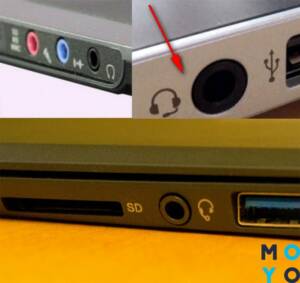- Why is it important to set up your microphone correctly?
- How to choose the right microphone for your needs
- Learning the basic sound settings on a computer
- Step by Step: Setting Up a Microphone in Windows
- How to set up a microphone on Mac: detailed instructions
- Voice command recognition: how to set up your microphone to work with Siri and other virtual assistants
- How to check microphone functionality and fix problems
- Tips for improving sound quality when recording voices
Why is it important to set up your microphone correctly?
Microphone setup is one of the key aspects for successful online communications such as video conferencing, audio and video recording. An improperly configured microphone can result in poor audio quality, background noise, and echoes, which can inconvenience others and detract from your work experience. Additionally, setting your microphone correctly can help avoid problems activating voice assistants such as Siri or Alexa, and Improve your recording quality while streaming on social media or YouTube. Considering all these factors, it is important to set up your microphone correctly to ensure high-quality audio and make your work more professional and convenient for those around you.
How to choose the right microphone for your needs
Choosing a microphone can be a daunting task, especially for beginners. It is important to understand that each microphone has its own characteristics and is designed for specific tasks. For example, recording a vocalist's voice requires a microphone with a cardioid polar pattern, which reduces the recording of sounds from the sides and rear of the microphone. If you want to record the sound of instruments, you may want to consider microphones with a different polar pattern, such as supercardioid or hypercardioid. You also need to consider the type of microphone connection and, of course, your budget. In general, choosing a microphone depends on your needs and goals.
Learning the basic sound settings on a computer
Computer sound settings are an important aspect of working with audio and video materials. To get the best sound quality when recording and playing back, you need to set the correct sound settings on your computer.
One of the most important audio settings is the volume level. This can be controlled using the volume control on your computer or on your headphones. It is important to set the volume level to a level that will not damage your hearing or interfere with your audio recording or playback.
Another important aspect of sound settings is the choice of microphone. Some computers have a built-in microphone that can be used to record sound. However, for better sound recording, it is recommended to use an external microphone.
It is also important to configure the sound card on your computer. This can be done through the sound control panel. Here you can set the sound card parameters such as sample rate, bit rate and other parameters.
Finally, be sure to check the audio settings in each app you use to record or play audio. Each application may have its own audio settings, which may affect the sound quality.
Overall, proper computer audio settings are key to getting high-quality sound when recording and playing audio and video materials. Feel free to experiment with different audio settings to find the best ones for your needs.
Step by Step: Setting Up a Microphone in Windows
If you're new to using a computer, setting up your microphone may seem like a daunting task. But don't worry, by following this guide you can easily set up microphone on your Windows computer.
Step 1: Connect the microphone to your computer
The first step is to connect the microphone to your computer. Typically, the microphone is connected to a connector on the back of the system unit, but some computers may have a connector on the front panel or laptops may have a built-in microphone.
Step 2: Adjust the microphone level
When the microphone is connected, you need to adjust the audio level. To do this, go to 'Control Panel' and select 'Sound'. Then go to the 'Recording' tab and select your microphone. Click on the 'Properties' button and go to the 'Levels' tab. Adjust the audio level to the optimal level, remembering to check the audio level while recording to make sure it is not too loud or quiet.
Step 3: Check microphone performance
Now that the microphone is configured, you need to check its operation. To do this, you can use the built-in 'Voice Dictation' program or open any audio recording application. Speak into the microphone and check if your voice is heard.
Step 4: Troubleshooting
If the microphone does not work, check that it is connected and configured correctly. It's also worth checking for driver updates on your device manufacturer's website. If the problem persists, you may need to replace the microphone.
Now you know how to set up a microphone on a Windows computer. Don't be afraid to experiment with settings to find the optimal sound level for your recording.
How to set up a microphone on Mac: detailed instructions
If you use a Mac computer, then you know that it is one of the most reliable and convenient devices for work and play. However, many users are faced with the problem of setting up the microphone on their device. In this article, we'll show you how to set up a microphone on Mac in a few simple steps.
Step 1: Check your connection
The first step is to check the microphone connection to your Mac. Make sure you have properly connected the microphone to the port on your device. If you have a built-in microphone, then skip this step.
Step 2: Open Sound Settings
To set up your microphone on your Mac, open your audio settings. To do this, click on the audio settings icon in the menu bar, which is located in the upper right corner of the screen. Select 'Audio Settings' from the drop-down menu.
Step 3: Select Input Source
After opening the sound settings, select the 'Input' tab. Here you will see a list of available audio input sources, including your microphone. Select the microphone you want to use.
Step 4: Set Volume Level
After selecting a microphone, set the volume level. This can be done by moving the volume slider at the bottom of the window. Make sure the volume is at the optimal level so that you can speak into the microphone at a comfortable volume.
Step 5: Check microphone performance
Once you've set up the microphone on your Mac, test it to see if it's working. To do this, you can use the built-in 'Voice Memos' application or any other application that uses a microphone.
By following these simple steps, you can set up a microphone on your Mac and use it to record audio, chat in video conferencing, and much more.
Voice command recognition: how to set up your microphone to work with Siri and other virtual assistants
If you use virtual assistants such as Siri or Google Assistant, then a well-tuned microphone is essential for them to work. In this article we will tell you how to properly configure your microphone to recognize voice commands.
1. Check the microphone settings on the system.
Before you begin setting up your microphone to work with virtual assistants, make sure that your system's microphone settings are configured correctly. In most cases, you can check your microphone settings under 'Sound Settings' or 'Sound Devices' in System Preferences.
2. Use a high quality microphone.
The quality of the microphone directly affects the quality of voice command recognition. Use a high-quality microphone that provides clear, clear sound.
3. Place the microphone closer to your mouth.
To help the microphone pick up your voice better, place it closer to your mouth. This will allow the microphone to better capture sound and reduce the amount of background noise.
4. Make sure the microphone is not blocked.
If the microphone is blocked, virtual assistants will not be able to recognize voice commands. Make sure the microphone is unlocked and ready to use.
5. Check for updates to your virtual assistant.
Sometimes problems recognizing voice commands can be due to bugs in the virtual assistant software. Make sure you have the latest software and updates.
By following these simple tips, you can set up your microphone to work with virtual assistants and get the most out of their use.
How to check microphone functionality and fix problems
A microphone is an important part of any computer used to communicate with other people over the Internet. However, like any other device, the microphone may sometimes not work properly or at all.
If you encounter problems using your microphone, the first step should be to check its functionality. To do this, connect your microphone to your computer and open any application that uses a microphone, such as Skype or Zoom. Then try recording the audio, say a few words, and listen to the recording. If the sound is recorded and played back, then the microphone is working.
If the microphone does not work, it may be a problem with the settings. Check to see if the microphone is enabled in your computer's audio settings. If the microphone is turned on but still not working, try restarting your computer. If this doesn't help, check for microphone drivers and update them if necessary.
If all of the above methods do not help, the problem may be with the microphone itself. Try using a different microphone to make sure the problem is not with your computer settings. If the other microphone works fine, then the problem is with your microphone and you may need to buy a new one.
So, checking the functionality of the microphone and fixing problems is not difficult and can be done in a few steps. If you are still facing problems with your microphone, please contact professional technicians to help you solve the problem.
Tips for improving sound quality when recording voices
When you record your voice using a microphone, the sound quality can be damaged by many factors, including noise, echoes, and other unwanted sounds. However, there are a few tips that can help improve the sound quality when recording your voice.
1. Choose the right microphone: Depending on what you are recording your voice for, you may need a different type of microphone. For example, a dynamic microphone may be a good choice for voice recording if you are in a noisy environment, such as at a concert.
2. Avoid noise: To reduce noise, you can use sound-absorbing materials such as carpets or curtains to absorb the sound. Also, you can record your voice in a quiet room to avoid unnecessary noise.
3. Use Software: There are many software tools that can help improve the audio quality of your voice recordings. For example, you can use noise removal software to eliminate background noise.
4. Maintain the correct distance: The correct distance between the microphone and the speaker can significantly affect the quality of the voice recording. Typically, the distance between the microphone and the speaker should be from 15 to 25 cm.
By following these tips, you can improve the sound quality of your voice recording and create a more professional product.
Read further:






